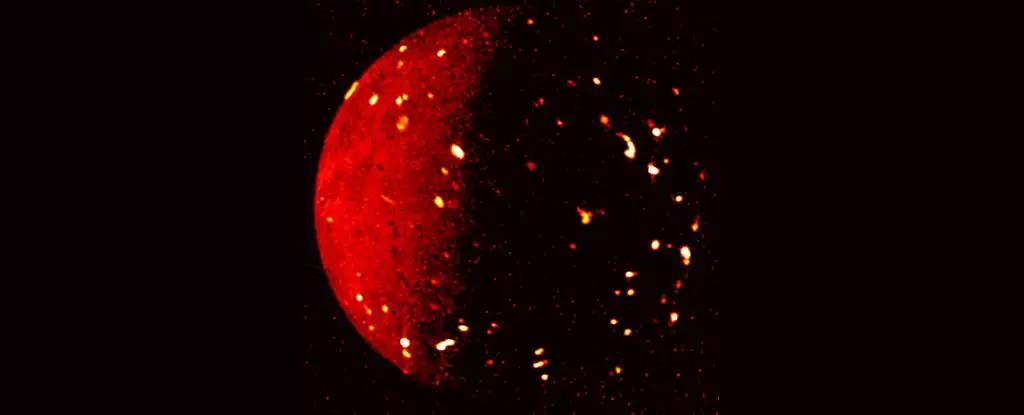Jupiter’s moon Io is a remarkable celestial body, brimming with volcanic activity. With approximately 150 of its 400 active volcanoes erupting at any given time, Io is like a constantly bubbling cauldron of lava and gas. The recent observations made by the Juno probe’s Jovian Infrared Auroral Mapper (JIRAM) have shed new light on the dynamic surface of Io, revealing a landscape dominated by lava lakes contained in caldera-like features.
Io is not only fascinating due to its volcanic activity but also because of the complex gravitational forces at play on this moon. Orbiting Jupiter in an elliptical path, Io experiences varying gravitational intensities from its parent planet. Additionally, the gravitational pull from other Galilean moons such as Callisto, Europa, and Ganymede further contributes to the internal stress on Io. This stress generates heat within the moon, leading to the significant volcanic activity that characterizes its surface.
While scientists have a solid understanding of the internal dynamics driving Io’s volcanism, there is still much to learn about how these processes manifest on the moon’s surface. Thankfully, the Juno probe has been able to provide detailed insights through close flybys of Io, capturing images of erupting volcanoes and lava lakes with unprecedented clarity. By analyzing infrared data collected by JIRAM, researchers have been able to identify distinct heat signatures on Io’s surface, particularly in the form of lava lakes surrounded by characteristic lava rings.
One of the key revelations from the recent Juno observations is the identification of the most prevalent type of volcanism on Io – massive lava lakes where magma cycles through an up-and-down motion. These lava lakes exhibit a unique structure, with liquid lava exposed at the edges, a solidifying crust in the center, and towering walls around the perimeter. The movement of the magma reservoir below the surface causes the lava levels in the lakes to fluctuate, resulting in the formation of lava rings as the edges of the crust interact with the surrounding walls.
The data obtained from the Juno flybys and the analysis of JIRAM infrared observations have provided scientists with fascinating new insights into Io’s volcanic processes. By understanding how lava lakes form and evolve on the moon’s surface, researchers can gain a deeper understanding of the intricate relationship between Io’s internal dynamics and its volcanic activity. These discoveries not only enhance our knowledge of Io but also contribute to a broader understanding of the geological processes at work in our Solar System.
Jupiter’s moon Io stands out as a captivating world of fire and fury, where volcanic eruptions and lava lakes paint a picture of constant geological upheaval. Through the advancements in space exploration and the data gathered by probes like Juno, we continue to unravel the mysteries of Io’s volcanic landscape, paving the way for further discoveries and insights into the dynamic processes shaping this remarkable moon.


Leave a Reply